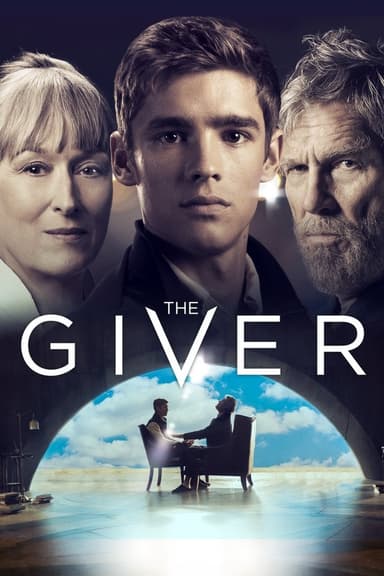
Nerve
2016 • Adventure, Crime, Mystery • PG-13
Industrious high school senior Vee Delmonico has had it with living life on the sidelines. When pressured by friends to join the popular online game Nerve, Vee decides to sign up for just one dare in what seems like harmless fun. But as she finds herself caught up in the thrill of the adrenaline-fueled competition partnered with a mysterious stranger, the game begins to take a sinister turn with increasingly dangerous acts, leading her into a high stakes finale that will determine her entire future.
Runtime: 1h 36m
Why you should read the novel
If you're intrigued by the themes of Nerve, you owe it to yourself to dive into Jeanne Ryan's original novel before pressing play on the movie. The book delivers a suspenseful and introspective look at its protagonist, Vee, as she navigates the harrowing challenges of a high-stakes online game, offering readers not just a thrill ride but a chance to connect with the character's inner struggles and motivations.
Reading the novel provides deeper exploration of peer pressure, the lure of internet notoriety, and the chilling consequences of lost privacy—all with the intimacy that only prose can offer. Ryan's writing allows you time to ponder the ethical dilemmas presented, dwelling in moments of tension and internal conflict that might be brushed past in a fast-paced film adaptation.
By experiencing Nerve in its original literary form, you'll appreciate the nuanced development of both characters and plot. The book’s narrative allows for a slower build-up of suspense and a more detailed view into the game’s structure, making your journey through Nerve feel all the more immersive and thought-provoking.
Adaptation differences
The movie adaptation of Nerve diverges from Jeanne Ryan’s novel in several key ways, beginning with the main character, Vee. While both iterations feature her as a high school student who joins the dangerous online game, book-Vee is far more introverted and cautious, making her leap into the game’s world a more significant and psychological transformation. The movie’s Vee, on the other hand, starts out as more socially engaged, with extroverted tendencies, which shifts how audiences interpret her motivations and actions.
Another primary difference rests in the depiction of the Nerve game itself. The book’s challenges tend to be less spectacularly cinematic but far more personal and cruel, focusing on emotional vulnerability and psychological manipulation. The film, by contrast, escalates quickly into visually striking dares—often dangerous or borderline illegal—in order to maximize on-screen spectacle and tension.
Romantic dynamics also take a different shape. While Ian, the male lead, serves as both a teammate and possible love interest in both versions, their relationship is developed with greater nuance and hesitation in the novel. The movie leans into the romantic angle with greater immediacy and chemistry, capitalizing on visual cues and dynamic interactions that can sometimes undercut the underlying tension or uncertainty present in the book.
Finally, the way the story concludes is notably dissimilar. Jeanne Ryan’s book takes a more ambiguous and unsettling route, leaving the reader with lingering questions about free will and societal complicity, while the movie opts for a more decisive and optimistic wrap-up. The film offers resolution and catharsis, whereas the book ensures the moral dilemmas and their consequences haunt the reader long after the last page.
Nerve inspired from
Nerve
by Jeanne Ryan










